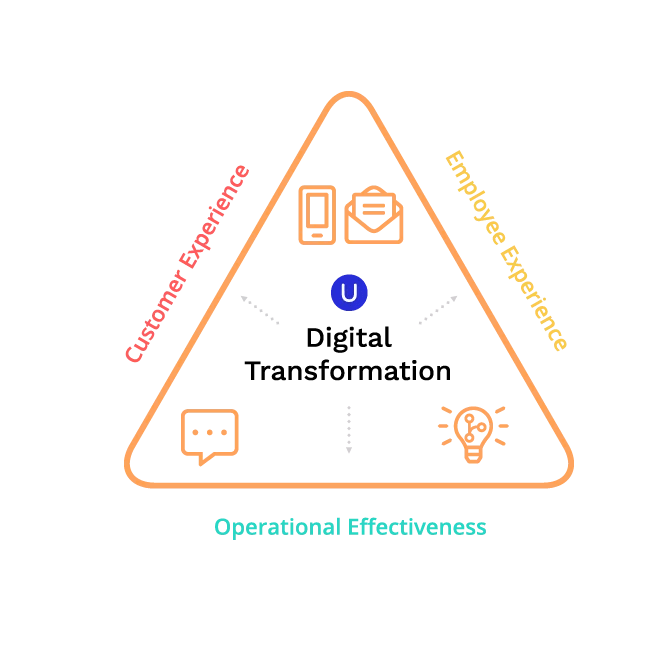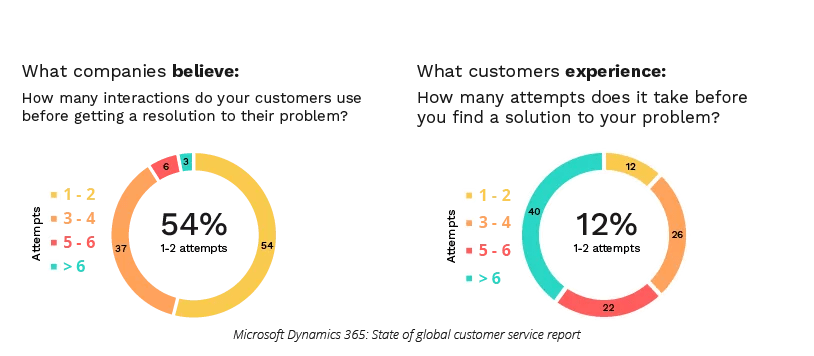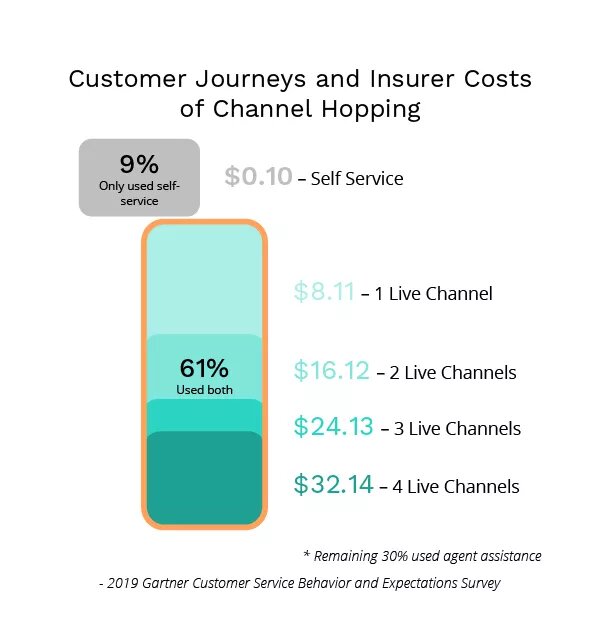Increasing Operational Effectiveness


When embarking on a digital transformation journey, insurance companies need to think, act, and expect differently than they have in the past. In this second edition of our three-part digital transformation blog series, we focus on how operational effectiveness gains are possible, while also improving customer experience and elevating employee engagement.
In our first part of this series, Janeen Blanton shared the importance of a customer-first approach to truly elevate customer experience. I’m going to follow her customer journey to point out the parallel operational effectiveness gains that can be realized when a carrier avoids the trap of creating an illusion of self-service.

Janeen’s disappointing, not to mention frustrating, experience with her insurance company is filled with the tell-tale signs of well-intended but hidden, people-driven activities. She logged into the customer portal to add her son to her auto policy. She expected it to be similar to an online shopping experience that would have immediately included the corresponding premium charge then finalizing the update to her policy. She anticipated both an on-screen confirmation along with an immediate email or SMS, depending on her established communication preferences. This would have included offering her the option to download a copy of her updated policy. And her son receiving an SMS or email to save an insurance ID card to his smartphone.
As you can imagine, the end-to-end process that Janeen expected should have taken her minutes from beginning to end with no need for people moving the ball across the field behind the scenes. However, her customer experience instead involved hours of her time spent over the period of a week tracking and fixing what should have been a relatively simple change. While I cannot say with certainty what was occurring within the walls of her insurance carrier, I can apply my own 30+ years of carrier experience to offer an informed guess. Especially because of the times that I had to design, implement and manage customer-facing solutions that implied automated self-service but were actually manually powered by the talent, perseverance and service dedication of incredible employees.
A study by Microsoft confirmed that customers believe getting their matters taken care of within a single interaction is the most important aspect of a good customer service experience. And while the companies surveyed believed 54% of the time that they were resolving their customers’ problems within 1-2 interactions, customers reported that that was their reality only 12% of the time. And most of the time, the customer experience required more than 6 attempts for their problem to be solved.

There are significant operational impacts to a Carrier when a customer’s need cannot be fully met within their first interaction. Gartner’s study on service channel hopping revealed that only 9%of customers could solve their problem through self-service.
Janeen’s experience aligns with 61% who had to jump over to a live agent channel for help. Just that first jump increases the carrier’s operational cost for that single customer by 82%.
The challenge with what I call “digital on the front end only” services is that they create a false customer expectation of speed, functionality and accuracy that can only be met through a fully automated process. The understandable response within the insurance carrier, to fulfill the customer expectation, is to apply as many people as possible to process each transaction. And to drive speed, an assembly line approach is created to decompose the multi-step back-office handling into several high volume, specialized tasks.

If I was drawing the resulting end-to-end manual workflow on a whiteboard, I’d be marking each task hand off as drivers of both service duration and operational effort. The journey resembles a relay race, except the passing of the baton isn’t immediate. When one task is complete, the hand off isn’t reaching the next person with them being immediately ready to complete their piece, and so on. Rather, there is always a pause since no employee ever sits idle waiting. And the movement from task to task includes the cost and time of process overhead. That overhead could be monitoring one or more email inboxes or workflow queues. Downloading or printing files may be involved. And each person with a discrete task within the overall service process has to spend time to confirm they received it in the intended sequence.
Each step within the manual relay race is a potential source of redundant activity and errors. Information is being manually moved across disconnected systems. At a minimum, this translates to data entry of the same information multiple times. People-driven data rekeying, mapping and sometimes even transforming, coupled with the pressures of volume and speed, open the door for human error. And some mistakes can be very hard to catch and could have serious consequences for a customer and in turn, the carrier. Imagine a numeric typo on a policy limit that isn’t discovered until a claim is filed. In addition to the customer retention risk and reputation hit, fixing the policy problem may require mobilizing a leadership fire drill, with another hit on operational effectiveness.
Why do some carriers introduce “digital on the front end only” solutions as part of their transformation approach? It’s with the best of intentions for customers but misses the mark in not being able to live up to the service expectations and lacking the transparency on how the transaction is actually being handled. An iterative, agile approach is a significant if not also uncomfortable mindset shift. It requires an insurance company to think about automating discrete steps within a process, and potentially out of sequence, versus starting at the beginning. It is a different way of setting priorities and delivering value, compared to a new core system which is often a large end-to-end implementation.
What might operational effectiveness have looked like if Janeen’s insurance company had offered a customer-first experience? It would not have been bogged down by a behind-the-scenes relay race. Mapping the customer journey – which is the full 360 degrees of adding a driver to her auto policy, not just what the customer touches – would have revealed what is most important, and the points of friction that impede meeting those needs. Let’s assume that speed and ease were highest on Janeen’s list – again, not just for her submitting the request but for completing the transaction. A back-office series of people-driven tasks erodes both speed and operational effectiveness. Ease goes out the window when the carrier’s process leaves the customer in the dark or dealing with hours of follow up if the workflow breaks.
If applying a customer-first, iterative approach with their first digital transformation step in place, Janeen might have been guided to call to process her request. She would be speaking with someone who could make change quickly and immediately in the policy system, including confirming the premium change. At the conclusion of that one call, Janeen would have had the peace of mind that the change was complete, when her son was soon able to show her his new digital insurance ID card. Her insurance company’s first digital transformation step in adding a new driver to a policy was not the customer request. Rather, it was automating the push of the SMS or email to the added driver, as soon as the policy change was made. With no relay race being run behind the scenes, the carrier avoids an operational effectiveness hit that also works against the customer’s definition of great service – speed and ease of doing business.
I hope this convinces you that customer experience and operational effectiveness can – and should – go hand-in-hand within your digital transformation. At the risk of sounding like an infomercial – there’s even more good news! Please don’t miss our third installment of this blog series where our colleague Maggie Parkhurst will look at employee experience.